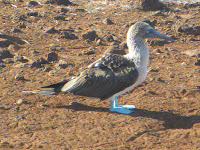




Today was perhaps my favorite day so far! Although it was perhaps the closest to the realities of nature that i have ever gotten.





































Inca Trail Day 1 & 2
Day 1: 6am and 12,000 feet.
The bus got to our hotel and we headed off for a three hour ride to the trailhead. The bus ride itself let me see the rural part of
Day 1: 9:30am and 9,000 feet
We geared up, the porters took our main gear (we were allowed 22lbs), tents and other supplies. We took our day packs. The trail started in desert or scrubland and one of our first sights was an agave cactus. This was the easy day to let us get used the altitude. I was soon falling behind, constantly out of breath. My body was not cooperating. The assistant guide Carmen was hanging back with me, coaching me along “take it slow” and “breathe deeply” almost became a chant of hers. We hit an Inca site on the way, with a fort, terraces and a temple. We stopped for lunch, and much to our surprise, we found a full tent with a table and chairs, along with bathroom tents were set up. After lunch the climb began. We had about 1,000 feet to do today. I grew further and further behind. Carmen would stop me, noticing my fingers turning purple due to lack of air. I was dizzy and lightheaded (more than normal) and just had to take it slow.
Day 1: 5pm and 10,000 feet
I got to camp about an hour after the others. I talked to both Carmen and our Guide César – would I be able to do manage the climb tomorrow? There is a difference between dogged determinedness and stupidity and there was only one way off the mountain – walking. They both told me they thought I could do it, so I was in bed by 8pm, getting ready for the big day.
Day 2: 6:30am and 10,000 feet
We were warned about day 2. It was a 3,000 foot climb to dead woman’s pass, 13,000 feet in all her glory. We were awakened by Carmen with a cup of hot tea right in our tent and a bowl of hot washing water. We were off by 7:30am. After about an hour, the trail turned from dirt to rock, steps mostly. We climbed through the cloud forest, which reminded me of home. Moss on the rocks and trees, madrona trees, rhododendrons, ferns all along a path made of granite river rocks – I was amazed how similar it looked. It was frustrated, I wanted to go faster and I had easily climbed such trail at home. But, of course, they were not at 10,000+ feet either. I soon figured out stopping for rests did little to get more air, you were winded 50 feet later no matter what. I learned to stop for three or ten breaths and to keep moving. I soon fell behind the group. My body refused to acclimatize. I was an hour late for lunch but they all waited for me. Lunch was a small bowl of soup and a hamburger bun with a single slice of cheese, as no one would have enough breath to digest AND hike. Meals would continue to be light through the trip. My entire ascent that day would be a total of one egg, one piece of toast, a half of bowl of broth, a hamburger bun with a single slice of cheese and two bites of a snickers bar.
Day 2: 1pm and 11,000 feet
We headed off to lunch, it would be two more hours to the peak, the trail is as steep as hell. I got my rhythm, three deep breaths per step. Carmen behind me – “take your time”, “breath deeply” and “take it slow”. One of the porters arrived about 45 minutes into the ascent and took my day pack from me, putting it atop his 50 lb load. He then followed me step by step, despite my protests that he to go ahead. After the first hour, I had Carmen, the head porter, the porter with my day pack and a guide from another group (same company) all steps behind me making sure I was ok. If I stepped wrong or wobbled a bit, they would get ready to catch me, like a Mom getting ready to catch a toddler on a climbing toy. I was better than the day before, but I never caught my breath. I am used to just pushing through things, you cannot with altitude sickness, the harder you push, the sicker and more dangerous it becomes. I made sure it never progressed over mild altitude sickness. All in all, I arrived at the pass an hour late, pretty good, considering I was planning to reach it well after dark. I wanted to shout and celebrate as I hit the top, but catching my breath seemed more important.
Day 2: 3pm and 13,000 feet
We soon headed down the other side (steep rock stairs) for 90 minutes. I got into camp at 4:40pm, time to collapse, wash, and be at tea for 5pm. The first few days took their toll, I never really caught my breath, cramps everywhere, as no oxygen got to my muscles and my stomach shut completely as the body had to make a choice between oxygen and digestion. I did not really get to know my other trekkers in the first few days, always behind and exhausted once I caught up. They were very supportive, but I was focused on breathing. This was hard day on everyone and sleep came at 8pm. We had another 800 feet to climb in the morning.